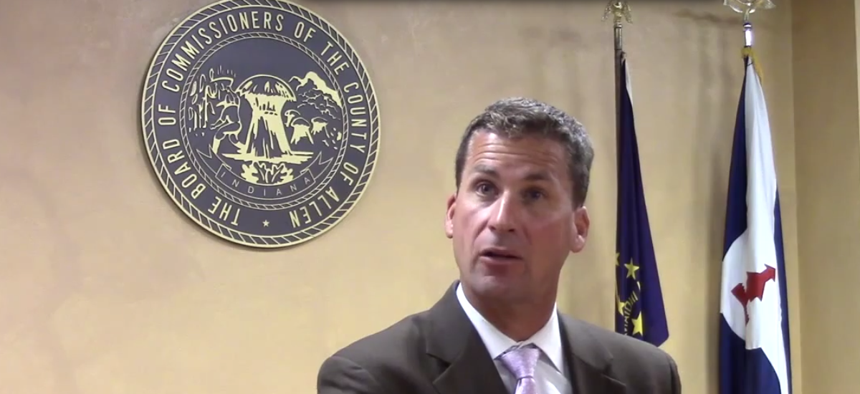Indiana County Considers Big Shift in Governance Structure

Allen County Council member Darren Vogt says the plan will expand representation for rural areas. Advance Allen/YouTube

Connecting state and local government leaders
Allen County plan to create a single county executive raises questions about representation.
Are three heads better than one? Voters in Indiana’s Allen County, home to the state’s second-largest city, Fort Wayne, will decide whether to scrap the county’s current three-commissioner system as a governance structure and replace it with one that would create a single county executive position with an expanded county board with district-based representation.
The Indiana legislature had previously authorized the county to consider a new governance structure and in July, Allen County’s election board approved the wording of a referendum that voters will consider in November.
Major local leaders and business interests have lined up in support of the plan and say it will help streamline the decision-making process in the county, home to roughly 360,000 people.
“You lack accountability when you have more than one person at the top,” Allen County Commissioner Nelson Peters said in an interview with the Indiana News Center late last month. “And you have a lot of finger pointing that can occur.”
Opponents, including some in the local farming community, have expressed reservations about consolidated power in a county executive system. But supporters of the plan point out that the county board would be expanded from seven to nine seats, all of which would have members representing specific geographic districts.
If the referendum is approved by voters, the new governance structure would go into effect in 2018.
In a new video posted by the Advance Allen referendum campaign, County Council member Darren Vogt explained that the expanded county board with district-based representation would help give the county’s rural residents more of a voice:
Vogt said:
When it comes to representation on this, I think there are easy ways to make sure we represent all parts of our community. We do have a very diverse community. We have rural farming communities, we have small towns, like Leo, Grabill, Monroeville, New Haven. All those folks need to have their voices heard. So when it comes to redistricting, I see a situation where those folks have a better seat at the table. There’s no seat for them at the table right now on the county council based on the population and district seats are. So what I see is a district map that’s made up a little bit more so you can encourage that rural representation based on the smaller district size and get some of that population whether it’s Huntertown or whether it’s Leo/Grabill area, or Monroeville and those kinds of things. It’ll be a better opportunity for them to have a seat at the table when it comes to the laws of the county.
So when you’re talking about [concentrated animal feeding operations] or farming operations or legislation that might impact those folks, they’ll be able to have representation in there versus now where they don’t have it now. So I think it’ll be different setup and I think it’ll be a setup that’s really a real important opportunity for them to really get their voices heard.
Information sessions are currently being held around the county to explain the plan to voters.





